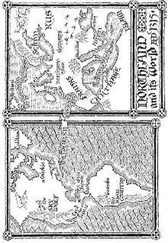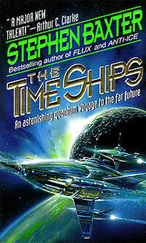And for the Na’vi, united in Eywa, this may have the strange consequence that to some extent the spirits of the ancestors are stored in the brains of their living descendants.
Eywa as a computing system is worthy of deeper study, for it shows signs of great sophistication in her processing and decision-making. The biochemical communication of the tree roots cannot be terribly fast, so planetary-scale Eywa may have a distributed decision-making system. When the woodsprites first detect there is something special about avatar-Jake, a holding decision seems to be made about him—Neytiri is instructed to keep him from harm—while, perhaps, the news is passed to higher levels of the hierarchy, and a deeper decision made. Later, Eywa clearly responds to the mass appeals of the combined clan, but she has options; there are clearly occasions when she feels it right to promote an individual. This is the Toruk Macto phenomenon, culminating in the selection of Jake himself.
But however smart she is, where did Eywa come from? How did she evolve?
Eywa is central to the Na’vi and their world. Jake learns that the Na’vi see the world as a network of energy, flowing through all living things; the energy is only borrowed, and you have to give it back. Eywa, the great mother, is at the centre of all this; she protects the “balance of life.” As such, perhaps she is a sister to our own Gaia.
As we saw in Chapter 2, according to theories developed first by James Lovelock, we believe that the Earth—its crust, the atmosphere, the water in the oceans and rivers and suspended in the air, and the biosphere, the world’s great cargo of living things—is a single, complex, highly interconnected system, constantly in flux under the pressure of powerful forces: the sun’s radiant energy which produces wind and rain and feeds life through photosynthesis, and Earth’s internal engine, principally the movement of the great tectonic plates and the outgassing of volcanoes. These forces drive tremendous cycles of mass and energy. And these unending cycles keep Earth habitable.
The main long-term challenge faced by life on Earth is what astrophysicists call the “Young Sun Paradox.” The sun, like all similar stars, is slowly brightening as it ages. In Earth’s early history the sun’s power output was only some seventy per cent of its current value. But despite this, as far back as we can see, temperatures on Earth’s surface have stayed about the same. Yes, there have been Ice Ages, but we have evidence from geology that on the whole liquid water has been able to exist on Earth’s surface for almost all of its history. Faced with a relentlessly brightening sun, some mechanism seems to have maintained the mean surface temperature of Earth in a range suitable for liquid water, and thus equable for life.
The key turns out to be carbon dioxide, the notorious “greenhouse gas” largely responsible for our current pulse of global warming. Carbon dioxide is injected (naturally) into the air by outgassing from volcanoes and other tectonic phenomena. It is removed by weathering, as the gas combines chemically with surface rocks, and by living processes; the bulk of the carbon in a tree trunk is drawn down from the air.
The outgassing is more or less constant, but the weathering rate and the productivity of life change with temperature. And because of that temperature dependence a global feedback mechanism has been operating, apparently for aeons. As the sun heats up, the carbon dioxide concentration is reduced , so that less heat is trapped, and overall the surface temperature stays constant.
This, and a number of other biochemical and geochemical feedback cycles, led Lovelock to formulate his Gaia hypothesis, that life has the ability actively to control its environment on a planetary scale, and thus to cope with changes such as the heating up of the sun. And all this emerged through self-organisation, as a natural outcome of the general increase of complexity on the planet. Lovelock’s ideas were greeted by a storm of scepticism, but the records of the evenness of temperatures in the past, and similar data, seem unarguable.
(This can’t go on for ever, though. When there is no more carbon dioxide left to draw down, the warming will at last be uncontrollable and the biosphere will gradually collapse. This will happen in less than a billion years. And remember that life on Earth is already some four billion years old. Gaia is old, not young, and Earth is closer to becoming a Mars-like desiccated world, like Burroughs’ Barsoom, than you might think.)
In the case of Gaia as we understand her, there seems no need for mind to be involved, no intention. “Gaia” is not alive. But what of Eywa?
Consider this. Alpha Centauri is an older star system than the sun, by some two hundred and fifty million years. That is a long time—four times as long as the gap between us and the dinosaurs—long even compared to the time there has been multicelled life on this planet, nearly half of that great span. So Pandora is most likely an older world than Earth, and its biosphere that much older too. And so Eywa must be older than Gaia.
Eywa, meanwhile, in preserving Pandora as a habitable world, has had significantly greater challenges to face than Gaia had. As a hazard, the slow heating-up of the sun has been relatively easy for Gaia to deal with; Gaia has had to become no smarter than a vast natural thermostat. Alpha Centauri A is heating up just as the sun is. But Pandora also suffers the tectonic agony of Polyphemus’ tides, and the tumultuous radiative and magnetic environment caused by its own magnetosphere and Polyphemus’. So Eywa has had to become a good deal more complex than Gaia—but has had the time to evolve ways to face its tougher challenges.
And, in the end, perhaps there was a sparking of consciousness, in a global network of ten to the twelfth trees.
All this is just my speculation. Perhaps the truth is entirely different. We have much to learn of Eywa, her true nature, her origin, and her ultimate destiny.
To paraphrase the British biologist J. B. S. Haldane, the universe is probably not just stranger than we imagine, but stranger than we can imagine.
That is surely true of Pandora. And this strange and remarkable world, Pandora, these remarkable people, the Na’vi, are what Jake Sully encounters when he enters the avatar link unit—and, astonishingly, looks out through the eyes of a body not his own.
PART EIGHT

AVATAR
“Everything is backwards now, like out there is the true world, and in here is the dream.”
—Jake Sully
Perhaps the single most complex element of the movie Avatar , both scientifically and mythologically, is the idea of the avatars themselves.
The avatars were originally created as a labour force adapted to conditions on Pandora, but proved too expensive for the purpose. Later, after pressure from the UN, scientists and the general public to establish fuller relations with the Na’vi, RDA changed the avatars’ mission; they became ambassadors for humanity among the Na’vi. Since this failed to have satisfactory outcomes the avatars have been redeployed for reconnaissance, field science and exploration—and, covertly, under Colonel Quaritch’s command, to gather military “intel” on the Na’vi. In future they could have other uses, such as supervisors if the Na’vi are ever made to labour in human mines…
The avatars look like Na’vi, more or less. Yet they are not Na’vi, and nor are they human. They are made things, grown in a tank from a mixture of human and Na’vi genetic material. In fine details they differ from the Na’vi: their human-like eyes, the number of their fingers.
Читать дальше











